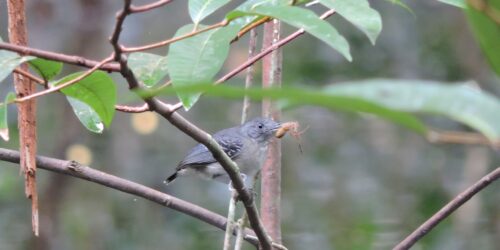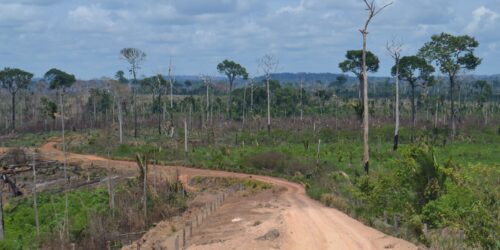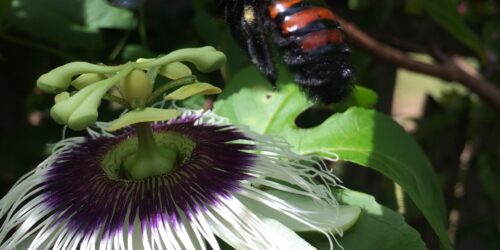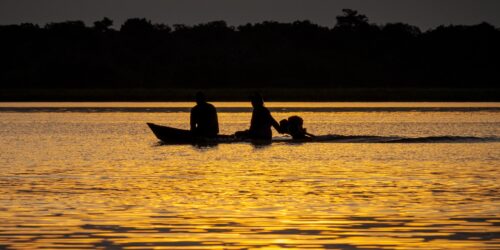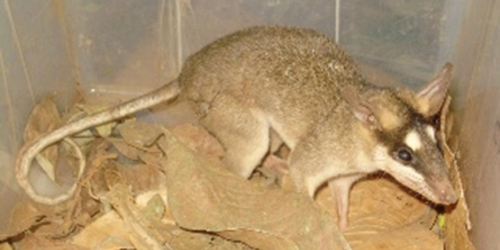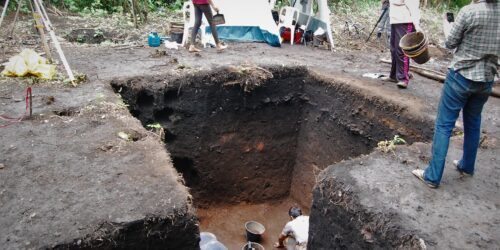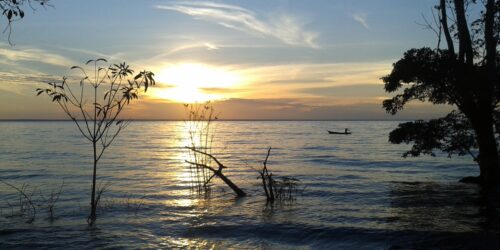José Lutzenberger and the defense of Amazonia
18 February 2021 | Duration of reading: 7 min
By Elenita Malta Pereira
One of the most important fights of the environmentalist José Lutzenberger was the defense of the Amazon. Lutzenberger (1926-2002), born in Porto Alegre, Brazil, descendant of German immigrants, was an agronomist engineer and the president of the Associação Gaúcha de Proteção ao Ambiente Natural (AGAPAN), founded in April 1971.
In the 1970’s, Lutzenberger's engagement in favor of the Amazon came through the writing of articles, speeches and interviews. In the late 1970’s and mostly in the 1980’s, Lutzenberger traveled many times to the region to know more closely the Amazon’s reality.

Lutzenberger in a lake near Solimões river, Manaus, 07/17/1978 (Reproduction of José Lutzenberger’s Private Collection).
In 1981 Lutzenberger took part of the documentary seriesThe decade of destruction" by Adrian Cowell as the narrator of the episode “Ashes of Forest”.


Brochure’s cover for promotion of The Decade of Destruction series (Reproduction of José Lutzenberger’s Private Collection). Frame of "Ashes of Forest” with Lutzenberger showing a devastated property in Rondônia.
In the documentary Lutzenberger criticized the migration of settlers from South, Southeast and Northeast of Brazil to the Amazon, encouraged by the military government to solve the problem caused by the spreading of industrial agriculture in these regions. In this context, international attention was turned to the importance of tropical rainforests. Especially in the 1980’s the debate regarding climate change and biodiversity preservation gained strength not only among specialists but became a general society's concern and a global interest. Thus, the defense of the Amazon in the 1980’s makes Lutzenberger increasingly known in Brazil and worldwide.
Lutzerberger pointed out causes of forest destruction at international events. In his vision, the devastation was promoted by livestock, megaprojects such as Projeto Carajás, the POLONOROESTE (an integrated development program for Brazil’s Northwest region)and also by the presence of multinational corporationsin the Amazon. The consequences, for Lutzenberger, was the genocide of indigenous people, rubber tappers and other forest inhabitants that have a lifestyle compatible with the preservation of their environment.

Lutzenberger speech of “Brazilian Wilderness: A Problem or a Model for the World?”, in 1983, at the 3rd World Wilderness Congress, organized by Findhorn Foundation, in Escócia (Reproduction of José Lutzenberger’s Private Collection).
Thus, the protection of the forest was accompanied with reflections about its role in global climate equilibrium, social sustainability and biodiversity preservation. However, as in all his other militancy fronts, the central problem for the ambientalist was a philosophical dilemma caused by the anthropocentric and exclusivist ethic of modern industrial society - that's how he called the consumerist capitalist society.
His defense of tropical rainforest allied to his criticism of pesticides resulted him a Right LivelihoodAward, also known as the Alternative Nobel PrizeIn the ceremony, in Sweden, 1988, Lutzenberger highlighted the importance of biodiversity preservation and alerted the dangers of climate change caused by forest destruction.
In the 1980’s Lutzenberger had contact with the Gaia Theory, formulated by James Lovelock and Lynn Margulis, and became one of its major disseminators. He participated in the creation of NGOs inspired by the Gaia Theory, such as the Gaia Foundation, in England, and Fundação Gaia in Brazil (Pantano Grande, Rio Grande do Sul). With the Gaia Theory and his practical and intellectual militancy as a base, Lutzenberger formulated the ethics of eco-sustainable development as a path to guarantee the continuity of the Amazon and of life as a whole.

Lutzenberger in Rincão Gaia, headquarter of Fundação Gaia in Pantano Grande (Reproduction of José Lutzenberger’s Private Collection).
In the 1990’s the Amazon subject acquired another character in the vision of Lutzenberger. He was nominated Environment Secretary in Collor’s government and from the beginning asserted that the defense of the forest would be his priority. He was criticized while he held this position but contributed to important achievements in the environment field, such as the end of nuclear experiments in Serra do Cachimbo and the demarcation of the Yanomami Indigenous land..
The fight for the Amazon preservation that Lutzenberger faced was not limited to fauna and flora preservation but also considers the protection of people affected by this devastation: indigenous, rubber tappers, and ribeirinhos. The concern with the Amazon forest was in international spotlight in the 1980’s and 1990’s due to the work of people like José Lutzenberger - people that activate their network of contacts to provide a better awareness of the Amazon and of the urgency for an conviviality ethic that preserves Gaia and humankind.
Science is done collaboratively
This research is derived from the doctorate thesis of this text author and is part of the project “José Lutzenberger: Um mediador entre o ambientalismo brasileiro e global (Déc. 1980-1990)”, developed from 2017 to 2020 in partnership with Sara Rocha Fritz (graduating at UFSC) and Denis Henrique Fiuza (under doctorate at UFSC). This research was financially supported by the federal government through CNPq (Edital Universal 01/2016)..
Want to know more? Access the links below!
Project Lutz Global Website (Link).
Lutz Global YouTube Channel (Link).
Pereira, E. M. A ética da convivência ecossustentável: uma biografia de José Lutzenberger. Tese de Doutorado em História. Programa de Pós-Graduação em História, Universidade Federal do Rio Grande do Sul. Porto Alegre, 2016. (Link).
______. “A década da destruição da Amazônia”: José Lutzenberger e a contrarreforma agrária em Rondônia (Anos 1980). História Unisinos. 21(1):26-37, Janeiro/Abril 2017. (Link).
PEREIRA, Elenita Malta; FIUZA, Denis Henrique; FRITZ, Sara Rocha. José Lutzenberger e a luta pela Amazônia: militância ambientalista internacional em defesa da floresta (1970-1990). Dossiê História Ambiental, Oficina do Historiador (PUCRS), 2º semestre 2020. (Link).

Elenita Malta Pereira is graduated, master and doctor in History at UFRGS. Blog editor of A Voz da Primavera. See more at Plataforma Lattes, ResearchGate and Google Scholar. A Voz da Primavera. See more on Lattes, ResearchGate and Google Scholar.

